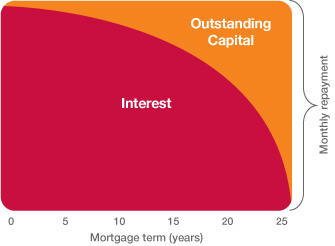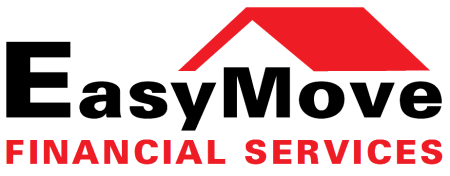Mortgages are one of the largest single transactions in most people’s lives. Buying a property can be a stressful and time consuming experience, although nowadays the financing of a mortgage is a case of finding and selecting the most suitable mortgage, rather than simply accepting a lender’s offer.
Banks, building societies, and smaller niche lenders compete for your business, all offering a variety of interest rate deals, associated fees and other enhancements to attract borrowers.
There remain two main methods of repaying a mortgage, and it is possible to set up the mortgage on a ‘part repayment and part interest only’ basis. A description of these methods is provided below.

Repayment (capital and interest) Method
Under the repayment method your monthly repayments consist of both interest and capital hence, over time, the amount of money you actually owe will decrease. In the early years your repayments will be mainly interest and therefore the capital outstanding will reduce slowly in the early years.
This method ensures that the mortgage is repaid at the end of the term providing all payments are made on time and in full.
Interest-only Method
As their name suggests, with the interest only method you only repay the interest on the amount borrowed. At the end of the term the capital is still outstanding. Therefore you will usually need to take out some kind of investment policy to save up enough money to repay the mortgage at the end of the term.
Traditionally the preferred product for repaying the capital of an interest only mortgage was a mortgage endowment policy (which included a set amount of life cover) – although more recently customers are using Individual Savings Accounts (ISAs) and pensions to build up a sufficient sum and taking advantage of the tax breaks offered by these products.
THE FINANCIAL CONDUCT AUTHORITY DOES NOT REGULATE SOME FORMS OF MORTGAGES.
YOUR HOME MAY BE REPOSSESSED IF YOU DO NOT KEEP UP REPAYMENTS ON YOUR MORTGAGE.
